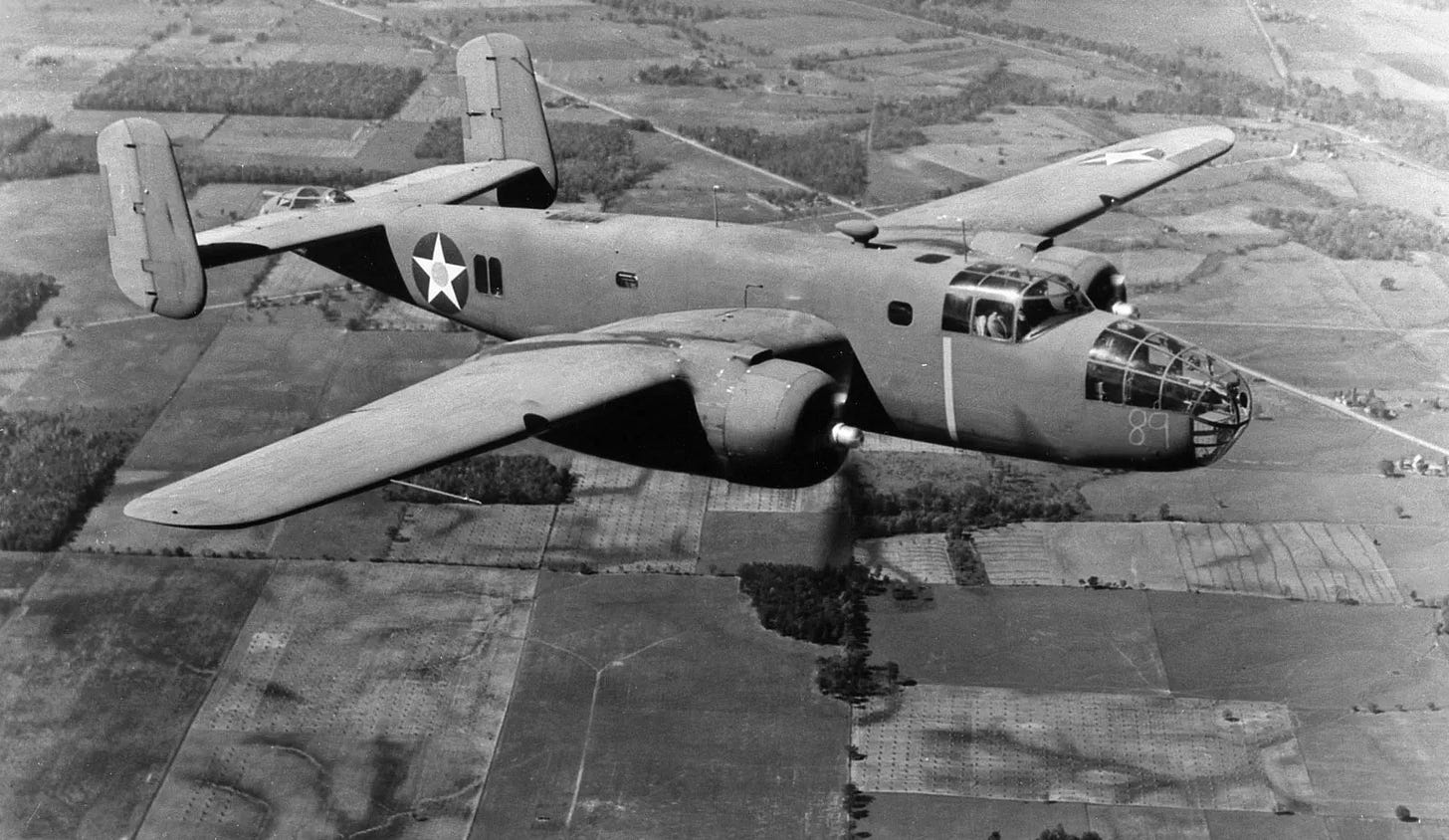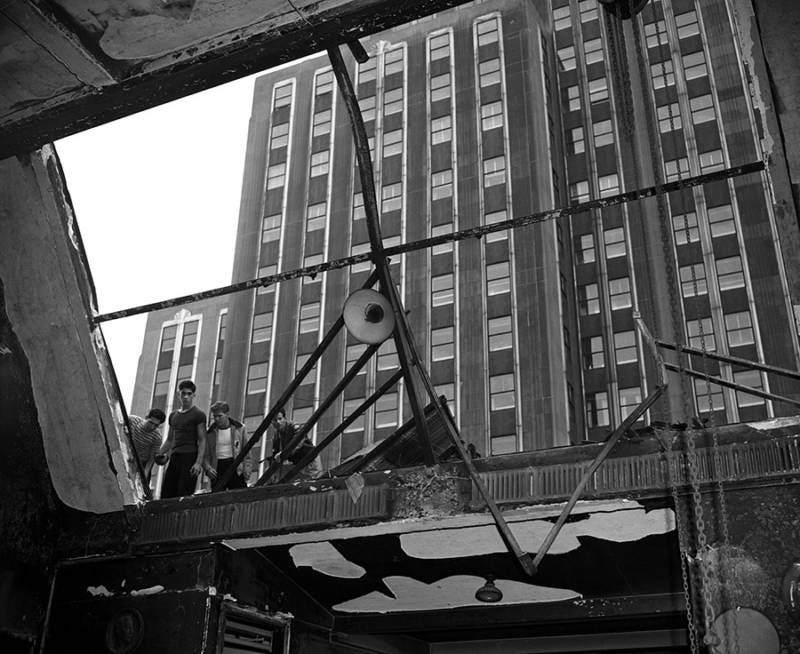While the B-25 was a smaller plane than the jets that allegedly struck the World Trade Center towers on 9/11, you can see that there is a very different style of impact than the “cookie cutter” outline of the jets into the World Trade Centers.
On July 28, 1945, a B-25 crashed into the Empire State Building appeared to knock out a few sections between I-Beams in a square pattern. Some of the debris fell to the ground on the exterior of the strike. The debris remained on a floor in the Empire State Building. People went back to work the next day. No debris passed out the other side. A fire from jet fuel occurred but did not damage the structural integrity of the Empire State Building.
While the fuselage of planes on 9/11 could also have knocked a hole and entered, there is just no way that the wing sections could have sliced through external I-Beams in the manner depicted, or that a resulting fire could weaken the entire structure of a massive rectangular steel box enough for it to collapse all at once. After the nose would have hit, the momentum of the plane would have slowed greatly, and the wings would likely have sheared off and fallen to the ground.
History Channel: Plane crashes into Empire State Building
A United States military plane crashes into the Empire State Building on July 28, 1945, killing 14 people. The freak accident was caused by heavy fog.
The B-25 Mitchell bomber, with two pilots and one passenger aboard, was flying from Bedford, Massachusetts, to LaGuardia Airport in New York City. As it came into the metropolitan area on that Saturday morning, the fog was particularly thick. Air-traffic controllers instructed the plane to fly to Newark Airport instead.
This new flight plan took the plane over Manhattan; the crew was specifically warned that the Empire State Building, the tallest building in the city at the time, was not visible. The bomber was flying relatively slowly and quite low, seeking better visibility, when it came upon the Chrysler Building in midtown. It swerved to avoid the building but the move sent it straight into the north side of the Empire State Building, near the 79th floor.
Upon impact, the plane’s fuel exploded, filling the interior of the building with flames all the way down to the 75th floor and sending flames out of the hole the plane had ripped open in the building’s side. One engine from the plane went straight through the building and landed in a penthouse apartment across the street. Other plane parts ended up embedded in and on top of nearby buildings. The other engine snapped an elevator cable while at least one woman was riding in the elevator car. The emergency auto brake saved the woman from crashing to the bottom, but the engine fell down the shaft and landed on top of it. Quick-thinking rescuers pulled the woman from the elevator, saving her life.
Since it was a Saturday, fewer workers than normal were in the building. Only 11 people in the building were killed, some suffering burns from the fiery fuel and others after being thrown out of the building. All 11 victims were workers from War Relief Services department of the National Catholic Welfare Conference, into the offices of which the plane had crashed. The three people on the plane were also killed.
An 18 foot by 20 foot hole was left in the side of the Empire State Building. Though its structural integrity was not affected, the crash did cause nearly $1 million in damages, about $10.5 million in today’s money.
The photos below are what it actually looks like when a plane hits a steel structure. The Empire State Building didn’t have nearly the external steel I-Beams that the World Trade Center towers had.
World Trade Center:
Empire State:
Photos from All That’s Interesting: 12 Dramatic Photos Of The Empire State Building Plane Crash, July 28, 1945.
More photos from Jacksonville.com: A Look Back: B-25 bomber crashes into Empire State Building
END


















